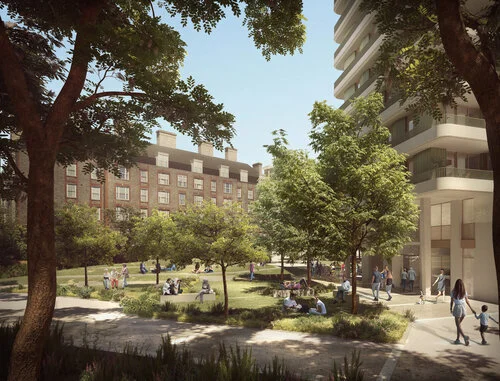Post-Pandemic Cities
Covid-19 has forced us to rethink our relationship with our built environment, and challenged us to consider how we might build better post-pandemic
Critically, building better is about more than just aesthetics. It is about providing spaces, which meet the full range of urban communities’ needs, from outdoor space, which is crucial for people’s wellbeing, to social housing for the most vulnerable. In addition, Covid-19 will leave a legacy of spaces designed for health and safety, while attention should also turn to making our cities more sustainable as the climate crisis endures.
New Priorities for Living
Our priorities for living have evolved considerably since the beginning of the pandemic, and Covid-19 will have a lasting legacy for how we design and inhabit urban spaces in the long term.
There has been a significant increase over the past year in the value people place on the outdoors, with 59% of people in the UK relying on walks outside to cope with the stress of the pandemic. Many former city-dwellers are voting with their feet and flocking to more rural locations. In order to address the inner-city dilemma, urban planners should consider how best to integrate outdoor space more intimately into our urban community, particularly as we continue life under the cloud of another national lockdown.
However, the importance of access to nature far precedes the pandemic. In 2019, the value of outdoor to our mental health was an estimated $6 trillion globally and experts have long linked proximity to nature to various improvements in mental and physical health. In fact spending just 120 minutes in nature a week has strong links to both good mental and physical health. Green space is particularly important with open, oxygenated environments helping alleviate stress and anxiety, as well as reducing the risk of obesity, diabetes and cardiovascular disease. UK-based architects and planners need only look to overseas projects such as Milan’s Bosco Verticale, with its 900 trees spread throughout 8,900 square metres of terraced apartment buildings, to glimpse the potential for integrating green space into urban settings.
But there is also an exciting range of innovative projects at our fingertips in the UK, with exciting schemes underway like the Camden Highline project, which will turn disused railway between Camden and King’s Cross into a new ‘green artery’ for London and astudio’s own redevelopment of Ebury Bridge Estate in London, which will achieve a significant improvement in both the quantum and quality of outdoor space available to residents.
Read the full article here: Architecture Magazine March 21 (flickread.com)
(Page 33-34)



